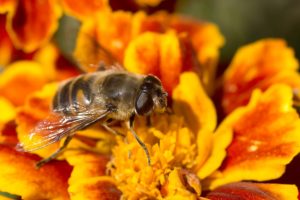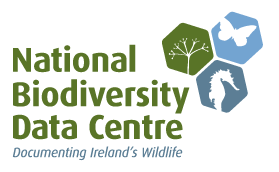What is Biodiversity?
Biodiversity – what’s all the fuss?
Biodiversity refers to the variety and variability of life on Earth. It is typically a measure of variation at the genetic, species, and ecosystem level. Biodiversity boosts ecosystem productivity where each species, no matter how small, all have an important role to play.
Can you explain that in plain terms for me?
So, a larger number of plant species means a greater variety of crops. Greater species diversity ensures natural sustainability for all life forms. Healthy ecosystems can better withstand and recover from a variety of disasters.
A healthy biodiversity provides a number of natural services for everyone – And quite a lot of services we get for free!
What sort of natural services?
- Protection of water resources
- Soils formation and protection
- Nutrient storage and recycling
- Pollution breakdown and absorption
- Contribution to climate stability
- Maintenance of ecosystems
- Recovery from unpredictable events
- Food
- Medicinal resources and pharmaceutical drugs
- Wood products
- Ornamental plants
- Breeding stocks, population reservoirs
- Future resources
- Diversity in genes, species and ecosystems

So, what is the Nitrogen Cycle?
The relationship between soil, plants, bacteria and other life is also referred to as the nitrogen cycle:
If we try to consider for a moment, all the species of animals and organisms involved in a simple field used in agriculture.
Again, can you explain this in plain language?
The Nitrogen Cycle is best summarized (below) by Vandana Shiva, Stolen Harvest (South End Press, 2000)
-
- Crop byproducts feed cattle
- Cattle waste feeds the soil that nourish the crops
- Crops, as well as yielding grain also yield straw
- Straw provides organic matter and fodder
- Crops are therefore food sources for humans and animals
- Soil organisms also benefit from crops
- Bacteria feed on the cellulose fibers of straw that farmers return to the soil
- Amoebas feed on bacteria making lignite fibers available for uptake by plants
- Algae provide organic matter and serve as natural nitrogen fixers
- Rodents that bore under the fields aerate the soil and improve its water-holding capacity
- Spiders, centipedes and insects grind organic matter from the surface soil and leave behind enriched droppings.
- Earthworms contribute to soil fertility
- They provide aerage, drainage and maintain soil structure –
- The earthworm is like a natural tractor, fertilizer factory and dam, combined!
- Industrial-farming techniques would deprive these diverse species of food sources and instead assault them with chemicals, destroying the rich biodiversity in the soil and with it the basis for the renewal of the soil fertility.
Shiva, a prominent Indian scientist and activist goes on to detail the costs associated with destroying this natural diversity and traditional farming techniques which recognize this, and replacing this with industrial processes which go against the nature of diversity sustainability.
 What all this I’m hearing about bees?
What all this I’m hearing about bees?
It seems that our humble (bumble) bee is crucial to our very existence.
Globally there are more honey bees than other types of bee and pollinating insects, so it is the world’s most important pollinator of food crops. It is estimated that one third of the food that we consume each day relies on pollination mainly by bees and other insects.
Scientists have been telling us this for years (see quotes below), but it seems to be only lately that people are starting to grasp the seriousness surrounding their demise.
So, do we really need the bees?
An article covered by CNN, back in 2000 told us that: One third of all our food—fruits and vegetables—would not exist without pollinators visiting flowers. But honeybees, the primary species that fertilizes food-producing plants, have suffered dramatic declines in recent years, mostly from afflictions introduced by humans.
In April 2009 – Diana Cox-Foster and Dennis van Engelsdorp, in Solving the Mystery of the Vanishing Bees, Scientific American, we were told:
“Humankind needs to act quickly to ensure that the ancient pact between flowers and pollinators stays intact, to safeguard our food supply and to protect our environment for generations to come. These efforts will ensure that bees continue to provide pollination and that our diets remain rich in the fruits and vegetables we now take for granted.”
Researchers are finding reasons for the massive decline hard to pinpoint, but suspect a combination of various diseases, environmental pollution, environmental degradation (leading to less diversity for bees to feed from, for example) and farming practices (such as pesticides, large monoculture cropping, etc).
Useful Info
Events
The National Biodiversity Data Centre runs an extensive programme of events each year. To obtain information and to book a place on any of the events, please click on the links below.
- Introduction to botanical keys
- Irish Crayfish Seminar
- Bumblebee Monitoring Scheme Workshop
- An introduction to recording bats
- Get to grips with grasslands!
- Ireland’s seabirds: identification and an ecological insight
- Identifying Ireland’s ants
- Introduction to grass identification
- Annual Recorders’ Event Burren 2019
[/td_block_text_with_title]

